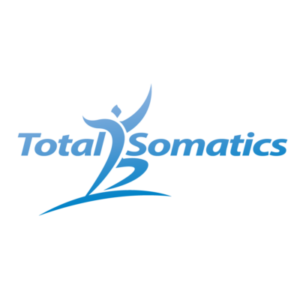What is the difference between Stretching and Pandiculation?
Pandiculation and stretching are very different. In today’s blog I am going to discuss the differences between the two and provide a very interesting video to show the science behind pandiculation and why it is a much more intelligent process to release and lengthen chronically tight muscles.
When I teach pandiculation to clients, they look intrigued how such small intricate movements can have such a profound effect on muscles. We live in an era where the expression “No pain, No gain” or “breathe through the pain or stretch” are common place. Unless people are creating elaborate stretches and twisting their body into all sort of positions, they don’t feel they will get enough of a stretch or lengthening of their muscles. Thankfully due to the research into neuroplasticity, pain scientists and neuroscientists are identifying the fact that movement with cortical learning has a far more superior effect than stretching. We have been taught for several decades that stretching will improve muscle function and activity. Thanks to Thomas Hanna researching and specialising in neuromuscular health, he discovered pandiculation to be an effective and longer lasting way to release muscles. Pandiculation is actually a veterinary term. Did you know that cats and dogs pandiculate over 40 times each day? They don’t stretch.
What is stretching?
Stretching is a process which requires muscles to be externally pushed, pulled or a forced lengthening of muscles fibres beyond their current sub-cortical set level of contraction. What do I mean when I say sub-cortical level of contraction? Your brain controls all muscular actions, coordination, contraction and relaxation. Due to habituated movement and behaviour, our brain will adjust to its “new normal.” So your brain will reorganise your internal GPS to hold certain muscles in constant contracted states and causing other muscles not to switch on. Over time this creates a huge imbalance in how we move, sit and walk. Tight muscles will only get tighter because the brain has simply forgotten how to switch them off. As a result, people may end up walking with a limp, developing a stooped posture, hip and knee pain, neck and shoulder discomfort and the list goes on!
So when a person decides to stretch a tight muscle, they may feel they are being mindful in this action, but often it can be the contrary. The person is wanting to pull or push that tight muscle a little bit further each tight to increase their flexibility. But the action of stretching does not involve a process which allows us to understand where the brain actually says its end point is. When the movements are made big and fast, we are unable to notice the sensory feedback from the body. Slow stretching still holds this same principle. The reason is stretching is a passive movement because we pull muscles into the length WE WANT them to be. So again to reiterate, we are not mindful of what the brain and body can actually do when we stretch.
When we stretch we do not make any lasting changes to the intelligence of a muscle. We can stretch a muscle, but a stretched muscle is just as weak as a contracted muscle. A stretch is purely a spinal cord reflex. A spinal cord reflex is a pre-programmed response by the body when it receives a signal to stretch a muscle. When a muscle spindle is stretched, an impulse is rapidly sent to the spinal cord with the message to contract the muscle.
Muscles become even tighter as the stretch reflex gives equal resistance to the pull, even to the point of cramp or spasm. This is a protective mechanism. Throughout the whole process of a stretch, there is no learning or awareness required because the actions do not go further than the spinal column.
Pandiculation is the process used in Somatics to release chronically tight muscles and improve flexibility without stretching. A Pandiculation consists of three phases, Contraction, release and rest. When we pandiculate we involve the cortex, the learning portion of the brain. So during pandiculation, the stimuli travels from the muscles, along the spinal column to the brain, and creates new neural connections or reawakens old neural connections related to that movement sequence or pattern. The new information then travels down to spinal cord to the muscles involved in the pandiculation. Repeated action of a pandiculation will teach the muscle to voluntarily or consciously switch off.
Pandiculation is therefore known as active lengthening because it requires attention and focus. We have to be present throughout and slowly contract the tight muscle and release mindfully, noticing the sensory feedback. The release phase is important because we have to notice where our comfortable length is without stimulating the stretch reflex. After only a short amount of time pandiculating, you will feel your brain has had a good workout! The reason for this is that so much learning is going on as we bring involuntarily contracted muscles back to voluntarily control. It is a TOTAL RE-EDUCATION of the muscle.
Due to habituated postures such as being slumped over a computer for hours on end, the muscles can learn to stay short. The brain adjusts and thinks this is ‘normal.’ We cannot stretch a tight muscle out but we are not involving the brain. But when we pandiculate, we can very effectively release and lengthen muscles past the point that the brain had programmed and return it back its full length. Pandiculation re-sets muscle length and increases our control of the muscles by bringing in brain awareness
If you would like to know more science behind Somatics check out this You tube video on Pandiculation. It discusses the process of Alpha-Gamma Co-activation to release tight muscles.
https://m.youtube.com/watch?v=GD6HJu8PK6w
My online programs at www.TotalSomatics.com teach you how to pandiculate. I have provided instructional videos, audios, and much more to bring somatics into your home, so you can practise these powerful yet subtle movements on a daily basis.
I am also available for Skype consultations if you would like a personalised program for a specific health issue.
I look forward to teaching you Mindfulness with Total Somatics.
Take care,
Heidi Hadley xx















Leave a Reply